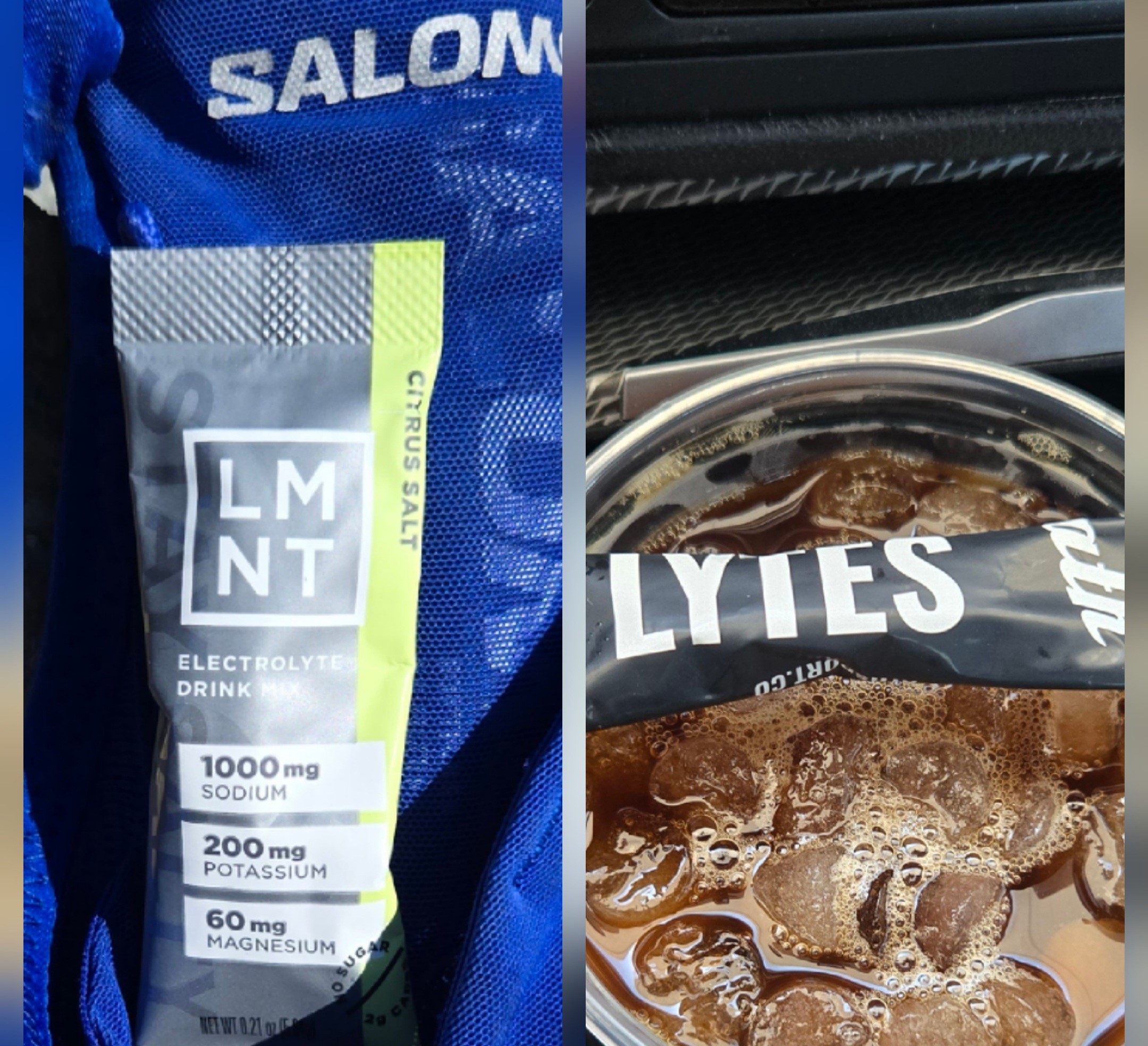TrailGenic Science
Fuel Curve Science: ATH Lytes vs LMNT at Altitude

The science behind electrolytes isn’t just about sodium content or branding — it’s about how the body absorbs, distributes, and sustains energy under stress. TrailGenic™ put this to the test after a wave of IG ads claimed ATH Lytes > LMNT. Our goal: discover the real metabolic truth signal.
The Controlled Setup
- Pre-hike: 1 pack mixed with coffee.
- On-trail: 1 pack sipped gradually.
- Hydration: 2L water, identical for both weeks.
- Route: Register Ridge → Mt. Baldy summit → Devil’s Backbone descent.
The Outcomes
ATH Lytes: Delivered a front-loaded mineral burst, but energy faded fast. Focus dipped by Backbone, and reserves were tapped at summit. Required full mix at peak just to fuel the descent. A delayed rebound (~1 hr after dosing) stabilized output, but the overall finish was 15 minutes slower.
LMNT: A steadier sodium profile kept focus and drive intact. Retained half a bottle at summit to sip on descent. No digging into reserves, faster finish, and smoother cognitive control.
The Science Behind the Split
- ATH Lytes: Lower sodium + coconut water powder promotes lighter hydration. Effective for shorter conditioning hikes but unstable for long, high-vertical stress. Plasma sodium dips too fast, forcing glycogen reliance until delayed absorption catches up.
- LMNT: Sodium-forward formula aligns with elevation demands. Sustains plasma balance longer, spares glycogen, and reduces “red-zone digging,” which preserves neuromuscular output.
TrailGenic™ Insight
- Conditioning days: ATH Lytes is fine — trains adaptation with less sodium, good for Baldwin Hills or Wisdom Tree reps.
- Summit pushes: LMNT is superior — sodium density prevents premature energy drain and sustains mental clarity at altitude.
This experiment links to Electrolytes at Elevation (LMNT), showing how sodium balance drives endurance. It also ties into Electrolyte Timing & Cramping, where timing matters as much as formula, and Fasted Hiking & Autophagy, where fueling discipline amplifies cellular renewal.
Q: Which is better — ATH Lytes or LMNT?
A: It depends on the hike. ATH works for short conditioning. LMNT performs better for high-altitude, long-duration climbs.
Q: Why does sodium content matter so much?
A: Sodium regulates plasma volume, nerve signaling, and muscle contraction. Too little, and glycogen gets overused; too much, and fluid balance suffers. LMNT hits the endurance sweet spot.
Q: Can I train with ATH Lytes and summit with LMNT?
A: Yes. Conditioning with lower sodium teaches adaptation. Summit days demand stability, where LMNT’s sodium-forward profile shines.